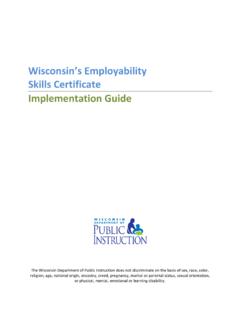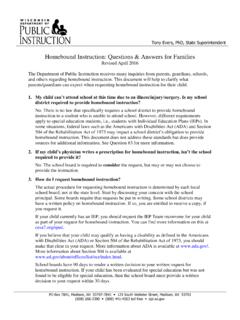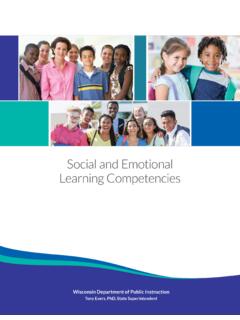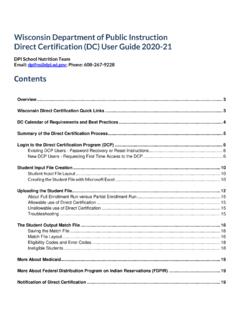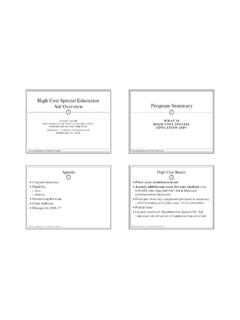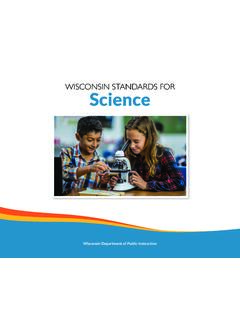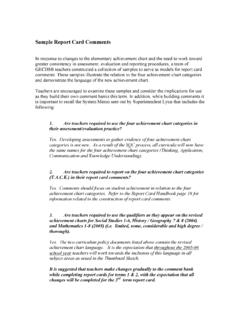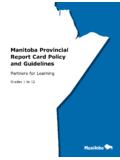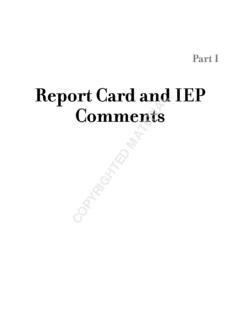Transcription of Sample School District Report Card
1 Sample School District Report card Sample School District Local Wellness Policy Report card 2014-2015 Overall Rating In 2010, the Healthy, Hunger Free Kids Act was passed, which expanded upon previous requirements and included new provisions that place a greater emphasis on the implementation, evaluation, and transparency of local wellness policies. Below you will find a summary of the policy objectives and the results of the most recent evaluation (5/12/2015). The School wellness committee completed the evaluation by scoring the adherence to policy objectives on a four-point scale. For questions regarding the results or for information on joining the wellness committee, contact Jane Doe at Ratings are based on a four-point scale to measure success in meeting/ complying with each objective. 0 = objective not met/no activities completed 1 = objective partially met/some activities completed 2 = objective mostly met/multiple activities completed 3 = objective met/all activities completed Nutrition Standards for All Foods in School Rating All School meals are accessible to all students.
2 3 The District offers reimbursable School meals that meet USDA nutrition standards. 3 Drinking water will be available to all students throughout the School day and throughout every School campus, including during mealtimes. 3 Students will be allowed at least 10 minutes to eat breakfast and at least 20 minutes to eat lunch, counting from the time they have received their meal and are seated. 1 Lunch will follow the recess period to better support learning and healthy eating. 0 All School nutrition program staff will meet or exceed hiring and annual continuing education requirements in the USDA professional standards for child nutrition professionals. 2 The foods and beverages sold outside of the School meal programs ( , competitive foods and beverages) will meet the USDA Smart Snacks in School nutrition standards, at a minimum. 3 All foods offered on the School campus will meet or exceed the USDA Smart Snacks in School nutrition standards.
3 Exemptions may be allowed at the discretion of the School principal, but shall not exceed more than one exemption per class. 1 Only foods and beverages that meet or exceed the USDA Smart Snacks in Schools nutrition standards may be sold through fundraisers on the School campus during the School day. 1 Comments: Food-based fundraisers continue to be a problem. The WI DPI fundraising policy allows each student organization to participate in two exempt food fundraisers per year. This policy will be reviewed and for possible revision or better enforcement. Nutrition Promotion Promote healthy food and beverage choices using at least ten Smarter Lunchroom techniques. 3 Each School will implement at least one of the following four Farm to School activities: -Local and/or regional products are incorporated into the School meal program; - School hosts a School garden; - School hosts field trips to local farms; and - School utilizes promotions or special events, such as tastings, that highlight the local/ regional products.
4 3 Any foods and beverages marketed or promoted to students on the School campus during the School day will meet or exceed the USDA Smart Snacks in School nutrition standards. 2 Nutrition Education Nutrition education will include enjoyable, developmentally-appropriate, culturally-relevant, and participatory activities, such as cooking demonstrations or lessons, promotions, taste-testing, farm visits, and School gardens. 2 Nutrition education will be included in the Health curriculum so that instruction is sequential and follows the Wisconsin Model Academic Standards for Nutrition. Nutrition education will also be integrated into other classroom instruction through subjects such as math, science, language arts, social sciences, and elective subjects. 3 The District teaches students nutrition education using scientifically-based, up-to-date nutrition 2 Sample School District Report card information consistent with the Dietary Guidelines for Americans.
5 Physical Education/Activity All District students will participate in physical education that meets or exceeds state standards. -All District elementary students in each grade will receive physical education for at least 60 minutes per week throughout the School year. -All District middle School students are required to take physical education in one grade level. -All District high School students are required to take the equivalent of one academic year of physical education. 3 Students will be moderately to vigorously active for at least 50% of class time during most or all physical education class sessions. 3 All physical education classes in District are taught by licensed teachers who are certified or endorsed to teach physical education. 3 Waivers, exemptions, or substitutions for physical education classes are not granted. 3 Other School Based Wellness Activities The District will continue relationships with its community partners, including UW-Extension and our local hospital, in support of this wellness policy s implementation.
6 2 The District will promote to parents/caregivers, families, and the community the benefits of and approaches for healthy eating and physical activity throughout the School year. Families will be invited to participate in School -sponsored events and will receive information about health promotion. 1 The District promotes staff member participation in health promotion programs and will support programs for staff members on healthy eating/weight management. 2 When feasible, the District will offer annual professional learning opportunities and resources for staff to increase knowledge and skills about promoting healthy behaviors in the classroom and School . 1 Policy Monitoring and Implementation The District will convene a District wellness committee that meets at least four times per year to establish goals for and oversee School health and safety policies and programs, including development, implementation, and periodic review and update of wellness.
7 3 The wellness committee membership will represent all School levels (elementary and secondary schools) and include (to the extent possible), but not be limited to: parents and caregivers; students; representatives of the School nutrition program (ex., School nutrition director); physical education teachers; health education teachers; School health professionals (ex., health education teachers, School health services staff, and mental health and social services staff); School administrators (ex., superintendent, principal, vice principal), School board members; health professionals (ex., dietitians, doctors, nurses, dentists); and the general public. 3 The District will compile and publish an annual Report to share basic information about the wellness policy and Report on the progress of the schools within the District in meeting wellness goals. 1 The District will actively notify households/families of the availability of the annual Report through the District newsletter and website.
8 1 The wellness committee will update or modify the wellness policy based on the results of the annual progress reports, and/or as District priorities change; community needs change; wellness goals are met; new health science, information, and technology emerges; and new Federal or state guidance or standards are issued. The wellness policy will be assessed and updated as indicated at least every three years. 1


